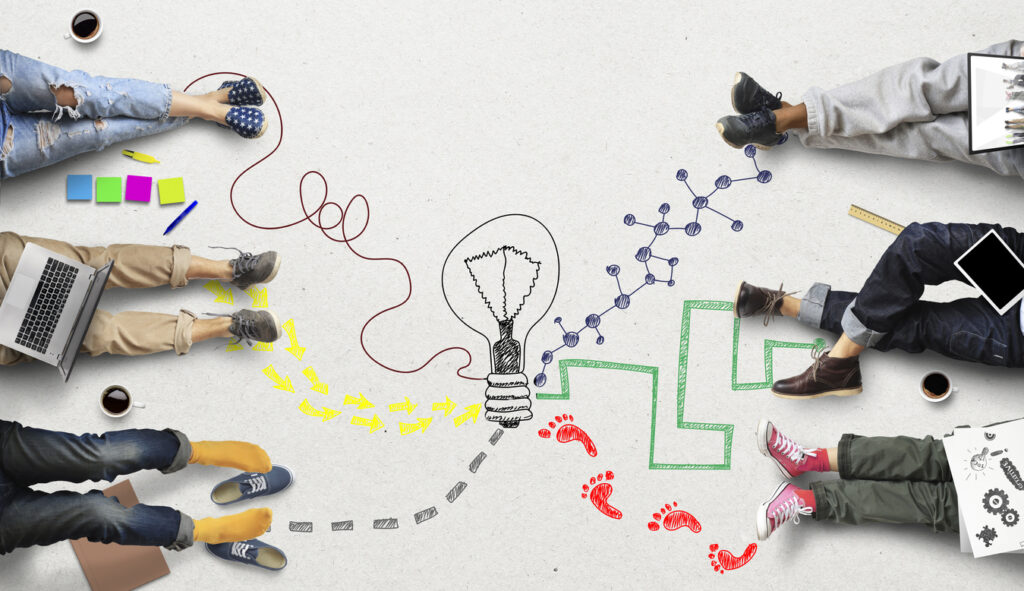In September 2020, at the height of the pandemic, we surveyed nearly 600 workers across the UK to hear how they were managing the stress of the pandemic at home and at work. We learned some obvious things, like that 36% of UK information workers agreed that their mental health had suffered because of the pandemic and that 38% of them felt like they were working harder than before the pandemic. We also learned some things we didn’t intend to find, one of which has been vital to getting organisations through the pandemic and will be crucial to how workers help grow their organisations long after Covid-19 passes. That underappreciated thing is the power of creativity.
Creativity is not stimulated by messages from the organisation to the employees. Rather, it is fostered by giving people the resources to develop alternative solutions to problems and achieve new breakthroughs.
People have been the key to getting businesses through the pandemic. Those people pulled off the impossible, adjusted to new requirements, and invented new solutions to new problems, possibly solving some old problems in the process. To do this, they drew on an attribute they weren’t explicitly hired for – creativity. This applied not only people in creative roles, but everyone in every role. When encouraged by an employee experience that invites and rewards creativity they can multiply the value of every other business resource or process.
Creative advantage – creative organisations engage employees more deeply
Our data from the UK, US, and Australia collected in September 2020 proved that whether people believe that they are creative or not is less important than whether or not they believe their work environment is creative. Regardless of their role, the one in four workers who believe that their organisations compare favorably with companies known for their creativity – in operations, marketing, product, or otherwise – are more than twice as likely to score high in employee engagement. Where 20% of UK information workers typically score in the highest category using Forrester’s EX measurement methodology, 44% of those who consider their organisations creative score high on EX.
This increased engagement influences how they feel about the organisation; for example, 83% of these employees in high-creativity firms say they are ‘proud to work’ for their organisation, compared with the 47% of employees in low-creativity environments who can say the same.
Encouraging creativity is not a message – it’s about resourcing and rewarding innovation
Creative advantage is an underexploited source of competitive advantage. The key to achieving this, however, is not sending an email from the executive team encouraging everyone to ‘be more creative’! As research into the psychology of risk and ingenuity has revealed, creativity is not stimulated by messages from the organisation to the employees. Rather, it is fostered by giving people the resources to develop alternative solutions to problems and achieve new breakthroughs.
Workers have to believe that their ideas are welcome and that they will be acted on if found to be worthwhile. They also need to believe that they will be rewarded as a result. That’s why 57% of our respondents in high-creativity workplaces say that in their jobs, ‘when innovative ideas are proposed, they get acted on very quickly’, compared with a dismal 19% of those in low-creativity environments. It also explains why 60% of those in high-creativity environments say that, ‘we generally adopt new technologies before others’, in contrast with only 16% of workers in low-creativity workplaces who say the same.
If you want creative advantage, you have to lead with it
Leaders who support individual creativity while also investing in organisational creativity will reap the benefits ahead of those who believe that creativity is something only required of some people or for a specific occasion like a team offsite. Tellingly, 68% of UK workers in high-creativity environments say that their senior leaders are ‘curious and interested in new ideas’, which far outstrips the 31% of workers in low-creativity environments who say the same.
[cm_form form_id=’cm_65a14c3f5da64′]
The evidence is clear: creativity is not a programme or an initiative, it is woven into the very fabric of how workers experience their jobs, their work resources, and the example of their leaders. Creativity is already giving companies dealing with the unexpected changes of the pandemic a boost and it will continue to elevate those organisations through the changes that will follow the pandemic. Evaluate now whether you are leading the organisation by example of curiosity at all levels of leadership, by providing resources needed for experimentation and problem solving, and by acting quickly on new ideas and rewarding those who generate them. In turn, you will see a general lift in energy, pride, and innovation across your organisation.
Interested in this topic? Read How to nurture a company culture that embraces creativity and innovation.







